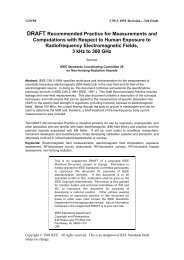An introduction to the quark model
An introduction to the quark model
An introduction to the quark model
You also want an ePaper? Increase the reach of your titles
YUMPU automatically turns print PDFs into web optimized ePapers that Google loves.
Few-charge systems His<strong>to</strong>ry of <strong>the</strong> <strong>quark</strong> <strong>model</strong> Mesons Baryons Multi<strong>quark</strong>s and o<strong>the</strong>r exotics Outlook<br />
Permutation symmetry for (qqq)<br />
Again<br />
Ψ = ψ(x, y) ψs ψi ψc ,<br />
For <strong>the</strong> ground state of ∆ ++ = (uuu) or Ω − = (sss), this is easy,<br />
each fac<strong>to</strong>r is ei<strong>the</strong>r S or A, where S now means “fully<br />
symmetric” and A “fully antisymmetric”<br />
For <strong>the</strong> nucleon, one has <strong>to</strong> introduce <strong>the</strong> concept of “mixed<br />
symmetry”<br />
The pro<strong>to</strong>type is given by <strong>the</strong> Jacobi coordinates<br />
x = r 2 − r 1 , y = 2 r 3 − r 1 − r 2<br />
√ 3<br />
Odd or even under P12, but ( j = exp(2 i π/3))<br />
P→[y + i x] = j [y + i x] ,<br />
JMR Quark Model<br />
,

















